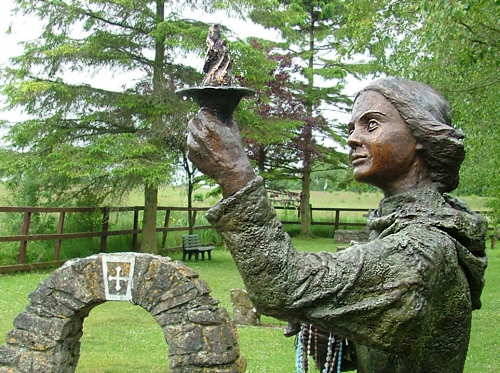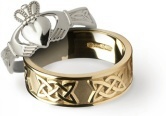Blog Categories
Blog CategoriesSpring Has Sprung - The Celtic Festival of Imbolc
Spring is here and we examine the Celtic Festival of Imbolc in Ireland, marking the start of longer days...
The Celtic Festival was traditionally held on Saint Brigid’s Day (La Fheile Bride) or about halfway between the winter solstice and the spring equinox. It is one of the four major Gaelic seasonal festivals – the others are Bealtaine (May), Lughnasadh (August) and Samhain (November).
 |
| Statue of Saint Brigid |
In early Irish literature, stretching back to the 10th century, there are many mentions of Imbolc. Many believe that it was originally a pagan festival associated with the goddess Brigid and it was then subsequently Christianized as a festival of Saint Brigid. There were feasts, divination, Saint Brigid’s Crosses made and holy wells visited.
The word Imbolc derives from the Old Irish words I mbolg or ‘in the belly’, which meant the pregnancy of ewes. It would be traditionally associated with the start of the lambing season for farmers.
The blackthorn is said to bloom at the time of Imbolc and the holiday celebrated the longer days, signs of spring and was a festival to celebrate the delights of hearth and home. Like many Irish festivals, fire and purification had an important place and candles and fires were lit to mark the occasion – this was to symbolize warmth and the increasing power of the sun over the coming months.
The date would have been very significant in Ireland since the Neolithic times and it is noteworthy that this is based on the alignment of some important Megalithic monuments. The important Mound of the Hostages on the Hill of Tara in County Meath in Ireland has the inner chamber aligned perfectly with the rising sun taking place on the dates of Imbolc and Samhain.
Many of the customs have now died out in the 20th century, but many people still visit Holy Wells at this time of year to pray for health and the tradition is to walk around ‘sunwise’ and take water from the well to use in blessings.
And the weather too took center stage at this Festival as Imbolc was traditionally a time of weather divination. The old tradition of watching to see if serpents or badgers came out of their winter dens was followed. As tradition went, the Cailleach, the Gaelic divine hag gathered her firewood for the rest of winter. If she wanted to make the winter last longer, she would make sure the weather at Imbolc was sunny so that she could gather firewood, but if it was a bad day it meant that the Cailleach was asleep and winter would be over!
An old proverb about Imbolc best sums up these legends around weather:
The serpent will come from the hole,
On the brown Day of Bride,
Though there should be three feet of snow
On the flat surface of the ground.
